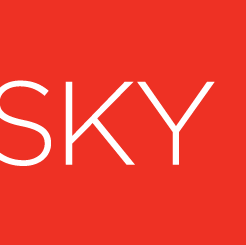The past few months have been a series of rapid changes, from stay at home orders to social distancing and huge workplace interruptions. Unlike major changes that are normal for a workplace, such as a merger, the changes brought on by the pandemic were largely not in our control, and not ones we were prepared for. How are industry leaders handling these transition times and preparing for the future?
There is a shift taking place now, as the initial shock of upheaval wears off. At the same time, the future is uncertain. That leaves us in an ambiguous place, between the ending of the old normal, and the start of whatever comes next.
There are models of thinking about change that industry leaders are putting forward. These frameworks help us process what has happened, understand where we are, and plan for the future.
Phase Two
Scott Eblin of Eblin Group says that we now find ourselves in Phase Two of the pandemic. During Phase One, businesses were responding to the rapid changes of the pandemic. The focus was on finding ways to keep businesses running at some capacity, if possible, such as creating remote workplaces or switching to delivery and pick-up.
Phase Three will be the emergence of the “new normal” — but we’re not there yet.
Where we are is in Phase Two, which is a time of emergence and reimagination. This is a shift in thinking from responding to immediate change, to planning for potential futures. Because the future is uncertain, leaders need to plan for multiple potentialites.
Eblin puts forward critical questions, such as:
“If we were starting over from scratch, how would we do it?
“If we stopped doing this, what could happen?”
“What would change if we had to do this for a couple of years?”
This framework of “if, then” is a useful tool to make the unknowns manageable. Eblin recommends running small tests to gather feedback as you feel out what is possible for the future.
The Bridges Transition Model
William Bridges created a model for understanding change and transitions that has been used for more than 30 years. The Bridges Transition model is used in change management, and highlights the importance of addressing the personal experience of change. This model gives the tools for people and groups to understand, manage, and work through a big change.
In this model, there is the Change and the Transition. The Change is the external event, and the Transition is the internal psychological experience people have in response to the event. For example, implementing a remote workplace is the Change, and each employees’ feelings and experience adjusting is the Transition.
Transition is a process that is broken down into the ending, the neutral zone, and the beginning. The ending is the process of saying goodbye to the past, whether mourning what you will miss, or leaving behind what you won’t. This is an important process that needs to take place before everyone can adjust to the future.
The neutral zone is where most of the work of transition takes place. It can be an uncertain or ambiguous time, as people adjust to the change. This is a crucial time for leadership to give guidance and a sense of stability.
The beginning is the start of the new normal, and can be a time of energy and growth.
There are many resources out there for leading and supporting people through the transition. People go through the transition process at their own pace. It’s crucial for leaders and organizations to address this internal, and oftentimes invisible process.
VUCA Framework
Another model is VUCA, which stands for Volatile, Uncertain, Complex, and Ambiguous. The model is a description of upheaval, but also outlines how to take action. Examples of VUCA situation were the time after the 9/11 terrorist attacks, and the 2008-2009 financial crisis. It can also be applied to the pandemic.
Volatility is a series of rapid changes, that are often unpredictable. To address volatility, create space for yourself and your team to think and process, instead of simply reacting.
The uncertainty of the situation can be addressed by gathering data and insights. Help people understand what is happening, and use facts as the backbone of your change strategy.
Since the situation is very complex, it can be overwhelming to address the whole. Instead, identify discrete, manageable chunks of the problem that can be tackled, or small positive action. Small and specific improvements add up over time.
For ambiguity, run tests on those manageable chunks, and share what you learn.
This is not a four-step process, but rather a cycle that feeds into itself. Take space, gather information, identify small pieces of the whole, test your ideas, and repeat.
Transition and change are challenging, and the sheer intensity of all the changes means that not all of us can cope as we usually might. Leadership and management is needed to process what is happening and figure out what comes next.

